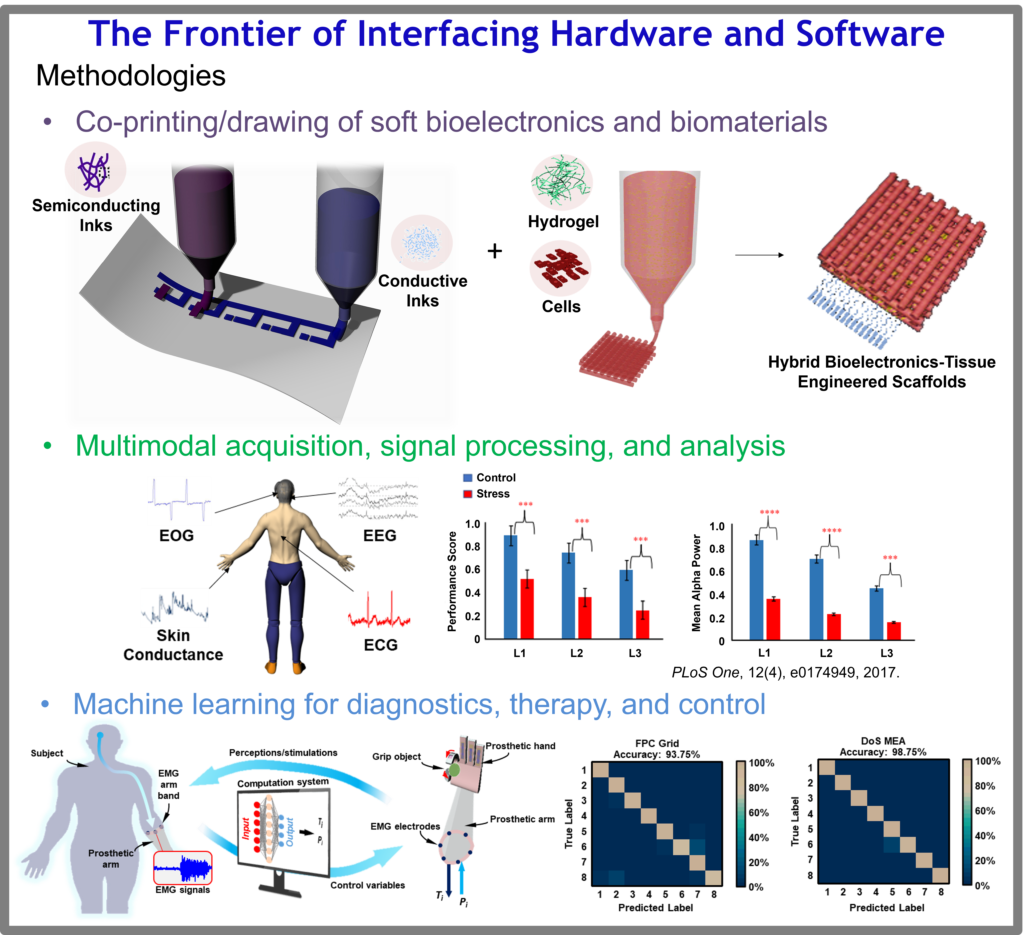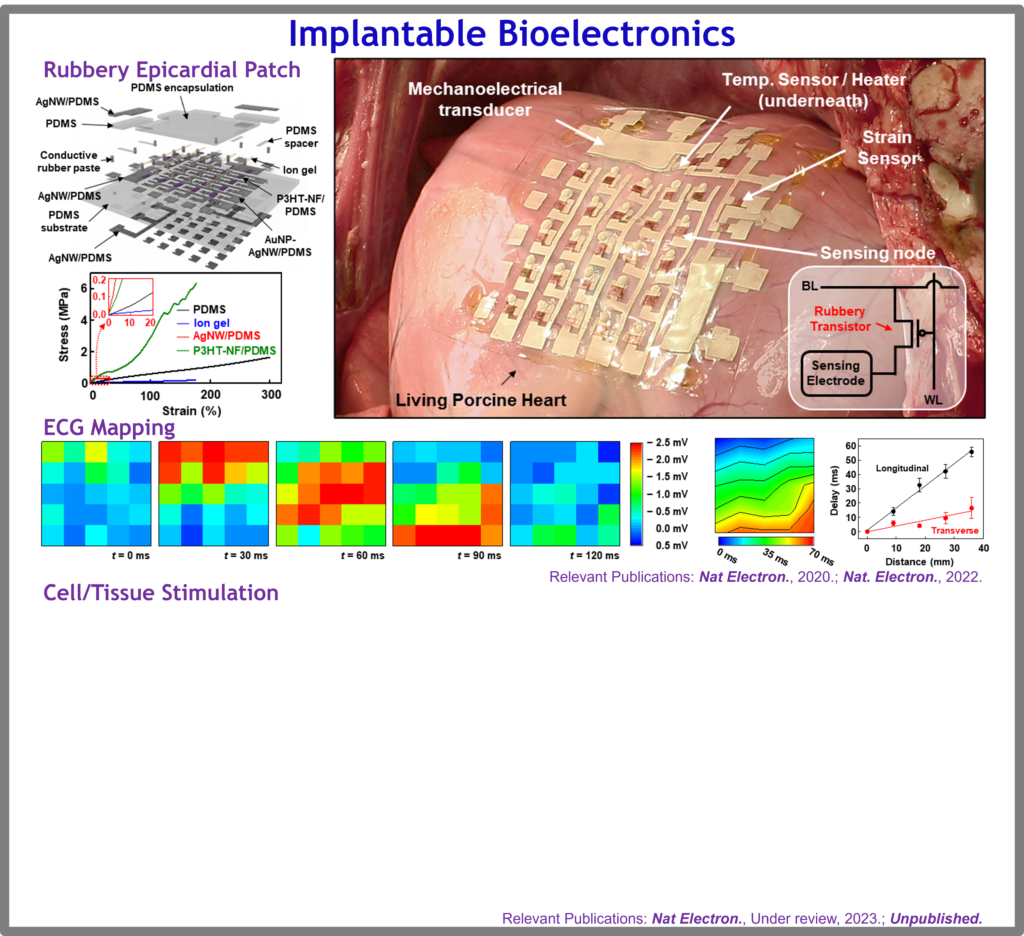Research
At the heart of my research lies a pivotal goal: the creation of cutting-edge wearable and implantable interfaces (devices/tissues) that seamlessly integrate/interface with the human body. These innovative technologies are imperceptible to users, allowing them to carry on with their daily lives while continuously monitoring their health and delivering treatments.
Research Motivation
My future work is primarily motivated by the need to improve diagnosis and treatment outcomes, by leveraging soft devices/interfaces made from biocompatible/biological materials and then analyzing the signals obtained with those devices to determine various disease states or determine treatments.
- Typical sensors/stimulators are made in bulky, rigid formats, that are not comfortable for regular usage. Soft devices that are mechanically compliant and imperceptible would be much more suitable.
- Implantable tissues, though they can help regenerate lost functions/replace damaged tissue, often lack sensing and stimulation capabilities. These capabilities are important features that can determine the success of implantable tissues/devices.
- Once we have these soft devices/tissues, it is critical to understand the type of data to collect and the associated challenges with data collection. One prominent issue is motion artifacts, from relative motion between the skin/tissue and sensor interface.
- Furthermore, there has been minimal exploitation of machine learning (ML) algorithms when collecting multimodal data, especially using soft sensors. Typical multimodal sensor studies still employ rigid wearables, missing the high-quality data achievable by their soft counterparts.
By implementing/embedding ML with soft devices/tissues, we can improve diagnostics, therapy, and control, eventually leading to better health outcomes.

Research Vision
My overall future research goal is to advance healthcare by uniting soft devices/interfaces, multimodal signal analysis, and machine learning. Achieving this bioelectronic synergy requires a particular background and skillset that I have uniquely developed throughout my PhD career, comprising aspects of materials science, chemistry, along with electrical, mechanical, and biomedical engineering.


Past Research
My involvement in various projects throughout my PhD, including the development of rubbery electronics for cardiac monitoring, pioneering drawn-on-skin bioelectronics, and prototyping nongenetic optically controllable engineered tissues for cardiac pacing, has equipped me with hands-on expertise in technology development and practical applications for diagnostics, monitoring, and therapy. These experiences have solidified my commitment to advancing healthcare through what I call bioelectronic synergy: the unification of soft devices/tissues with multimodal signal analysis and machine learning.


Relevant Publications
Drawn-on-Skin Bioelectronics
- Nature Communications, 11(1), 1-13, 2020.
- Small, 2107099, 2022
- PNAS Nexus, 2(1), pgac291, 2023.
- npj Flexible Electronics, 7, 32, 2023.
Synaptic Electronics
Rubbery/Soft Bioelectronics for Cardiac Applications
- APL Materials, 7(3), 031301,2019.
- Nature Electronics, 3(12), 775-784, 2020.
- Nature Electronics, 5(12), 1-12, 2022.
Cell/Tissue Stimulation
- iScience, 25(11), 105402, 2022.
- Nature Electronics, Under review, 2023.
- Nature Biotechnology, Under review, 2023.
